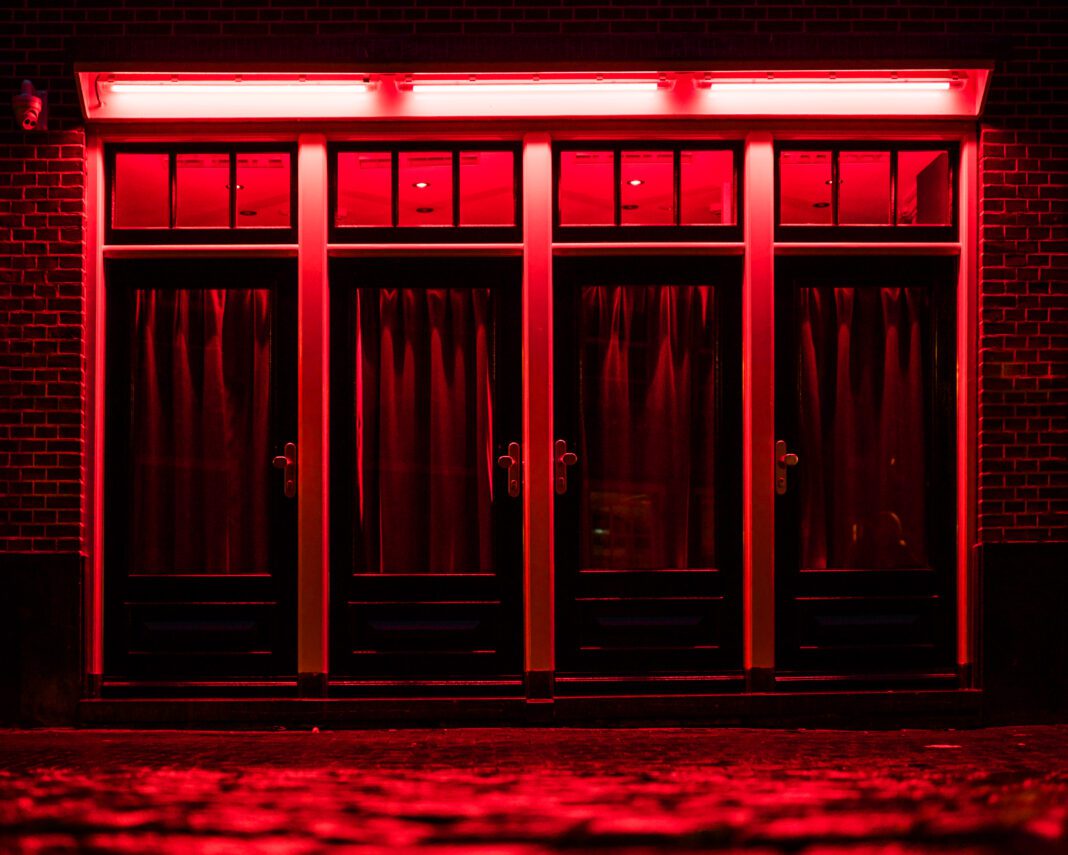It could soon be the end of the Red Light District in Amsterdam as we know it. Radical changes have been proposed for the workplace of the world’s oldest profession. An ‘erotic department store’ has been suggested as the best alternative.
Imagine a five-story building, brimming with room for one-hundred sex workers, but also cafes, a hairdresser, a beauty salon, and a tanning studio. It may even include a sex club and theatre. Once inside the centre, customers can walk past the famous windows, and partake in other activities.
Mayor of Amsterdam, Femke Halsema, has called this vision the best option for the future of the Red Light District. It’s not perfect, rather the erotic centre has slightly more advantages than disadvantages. But, the plan will assist with reducing the problems confronting the historic centre of Amsterdam around over-tourism and nuisance.
Halsema believes that by offering everything the Red Light District has in a one-stop-shop, the pressure in Amsterdam’s historic area will decrease. It will push party-tourists out of the historic centre, but also keep sex-workers in business in a safe environment, Het Parool reports.
Why are they changing the Red Light District?
As tourism in Amsterdam booms, the business in the cities most famous district has fallen. The number of window brothers stood at 1300 in 2006. By 2014, it had fallen to just 800, according to a municipal market survey.
Halsema and the city council do not want to just close brothel windows without a safe and legal alternative, and many Amsterdam sex workers don’t want to leave the district. But, a choice has to be made.
🚫 | Sekswerkers zijn geen bezienswaardigheid. Daarom worden rondleidingen op de Wallen en langs andere prostitutieramen verboden. De nieuwe regels gaan 1️⃣april in.#dewallen https://t.co/JlYjsepNkv
— Gemeente Amsterdam (@AmsterdamNL) February 13, 2020
What are the alternative fixes?
Halsema proposed several alternatives for the Red Light District last summer. They entered discussions with sex workers, operators, and other stakeholders to create new plans. These ideas varied wildly: some saw more windows in the Red Light District, others none at all.
In addition to the erotic centre is a ‘light’ version: a prostitution hotel where sex workers can receive customers. Customers could even purchase services and book online. However, Halsema is worried about the effect on tourism of this option, reports AT5.
What types of visitors come to the Red Light District?
Halsema has identified three types of visitors:
The ‘Demand-oriented customer’
These are the people attracted to the Red Light District specifically for sex workers, and not for socialising, food, or coffee shops. They want the district to have an accessible location and a good price, but are less concerned about how it is presented.
The ‘Available supply customer’
Ever had a drink near the Red Light District and thought ‘well, why not?’ We haven’t, but there is a specific type of customer who may be enthralled by the atmosphere and decide to knock on a window. However, these customers are less likely to head to an erotic centre as a destination.
The ‘Viewing tourist’
We’ve all taken a stroll along de Wallen at some point to sneakily or not-so-sneakily have a look at what’s happening there. It’s a rite of passage for tourists in Amsterdam and is mostly made up of women or families. This group makes up the majority of visitors.
How do types of visitors affect the Red Light District’s future?
It’s important to balance a lot of priorities when deciding the future of de Wallen. What’s more important: a steady flow of tourism, or a steady flow of business? For example, when changing the location of the Red Light District, will tourists still attend? What will happen to the current location? Will sex workers businesses suffer, or will their working conditions improve?
Amsterdam, Red Light District.
Year 1913 & Now.(click on the pic to enlarge)#ThrowbackThursday #Netherlands #DeWallen #TBT pic.twitter.com/mwwk4NrLyV
— Amsterdam Red Light District (@AmsterdamRLDT) December 19, 2019
The city council now must choose between the erotic centre or the erotic hotel. Halsema says the erotic hotel would mean losing the ‘viewing and party tourists’ who want to walk past the windows. Both this tourist group and the impulsive party tourist need to be accounted for. According to Halsema, the erotic centre would be achieve balance. However, finding the right building for so many functions could be difficult.
What does history tell us?
Amsterdam has tried to relocate sex workers back in 2009, with terrible results. Alderman Lodewijk Asscher headed Project 1012, but a report from the Court of Audit in 2018 ruled it a failure.
The city had also tried to relegate sex work to a tipple zone on the Themsweg 25 years prior. But, it closed after just a few years amid consistent trouble.
A necessary decision
Amsterdam city council will likely come to a decision on the plan this summer. However, issues such as location and business model could take much longer.
What do you think about the proposed changes to the Red Light District? Let us know in the comments below!
Feature Image: Erik Tanghe/Pixabay



